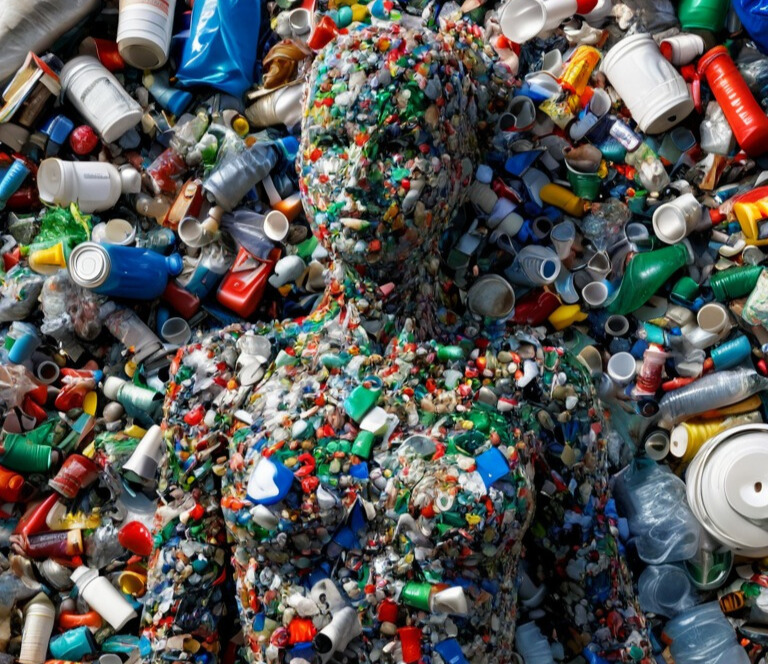Email Address
slavkasknonprofit@gmail.com
Phone Number
+421 914 704 008
Our Location
Ulica R. Seressa 1488/8, 94501 Komárno
slavkasknonprofit@gmail.com
+421 914 704 008
Ulica R. Seressa 1488/8, 94501 Komárno

On average, humans ingest about 5 grams of microplastics each week — roughly the weight of
a credit card. Plastic pollution is no longer just an environmental issue; it has become a global
health crisis.
Since the 1950s, the world has produced more than 8.3 billion tons of plastic. The vast majority
of this material still exists today and is increasingly found in natural ecosystems, living
organisms, and even the human body.
Plastic decomposes extremely slowly. It can take decades or even centuries for individual pieces
to disappear. But even during this process, they don’t vanish completely — they break down
into tiny microplastics that persist in the environment for a long time and eventually make their
way into living organisms, including humans.
These particles have now been detected in human arteries, including vessels that supply the
heart, brain, and legs. Recent studies suggest microplastics may be linked to heart attacks,
strokes, and deep vein thrombosis.
If current trends continue, global plastic waste could triple by 2060. More than 1.3 billion tons
of plastic waste could end up on land and in water. If today's production and waste
management practices persist, there could be more plastic than fish in the oceans within just a
few decades.
The global management of plastic waste suffers from serious shortcomings. Due to market
fragmentation and uneven recycling infrastructure, a significant amount of recyclable material
ends up in landfills.
The situation worsened when China banned the import of low-quality recyclable materials in
2018, causing recycling systems in many Western countries to collapse. In much of the world,
recycling is more illusion than solution.
Microplastics — plastic particles smaller than 5 millimeters — are now present in nearly every
part of the environment: in the air, drinking water, marine and terrestrial food sources, and
even in salt and honey.
They can enter the human body through various pathways:
• Food consumption: Fish, shellfish, crustaceans, and even agricultural crops often contain
microplastics, which end up in the human digestive system.
• Drinking water: Both bottled and tap water have been shown to contain detectable amounts
of microplastics.
• Inhalation: Microplastic fibers floating in the air — such as those from synthetic textiles —
can easily enter the lungs, especially in indoor environments.
• Through the skin (suspected): Some research is investigating whether microplastics can
penetrate through the skin, particularly via wounds or irritated areas.
While research is still ongoing, growing evidence suggests that microplastics are not only
present in the human body but actively harmful. Health consequences include:
• Inflammation: Microplastics can trigger cellular reactions, causing inflammation in the
intestines, lungs, or blood vessels.
• Oxidative stress: Plastic particles and the toxic substances that adhere to them (e.g., heavy
metals, phthalates, PCBs) can lead to oxidative cellular damage.
• Endocrine disruption: Compounds leaching from microplastics, such as bisphenol A (BPA), can
interfere with the hormonal system, potentially leading to reproductive issues and metabolic
disorders.
• Cardiovascular diseases: Recent studies have found microplastics in extracted blood clots,
suggesting a possible link to heart attacks, strokes, and vascular blockages.
• Cell toxicity: Some laboratory studies have shown that microplastics can cause cell death,
DNA damage, and apoptosis (programmed cell death).
THE EFFECTS ARE STILL UNKNOWN – BUT THE DIRECTION IS CLEAR
The accumulation of microplastics in the human body may lead to long-term effects that are
still only partially understood. However, one thing is clear: these materials are not neutral —
the body cannot fully break them down or eliminate them, allowing them to disrupt organ
functions over time.
The plastic that once symbolized the convenience of modern life has now become a toxic threat
at the molecular level. The health consequences are not some distant risk — they are already
unfolding.
Protection against microplastics is currently only partially possible. Since the contamination is
now global — present in the air, drinking water, food, and even inside our homes — complete
avoidance is virtually impossible. However, there are steps that can help reduce exposure:
– On an individual level:
• Drink filtered tap water instead of bottled water, as bottled water often contains more
microplastics.
• Avoid food packaged in plastic, especially when heating it, since chemicals can leach more
easily at high temperatures.
• Use air filters indoors, as indoor air can also contain microplastics.
• Choose ocean-friendly cosmetics that do not contain microbeads.
– On a societal and systemic level:
• Develop innovative technologies to filter or break down microplastics from water and air.
• Regulate the production chain, including stricter control or bans on products that release
microplastics.
• Reform global waste management systems, especially for non-recyclable plastics.
• Support scientific research and monitoring: the role of the scientific community is crucial in
understanding risks and mapping health impacts.
Microplastic pollution represents a new, invisible environmental threat that no longer only
endangers marine life but leaves a mark on the human body as well. Based on current trends,
the goal is no longer total avoidance, but rather exposure minimization and the urgent push for
systemic change.
To prevent future generations from living in a world saturated with microplastics, immediate
technological, industrial, and societal responses are required.
In the age of microplastics, the real issue is no longer how to protect the environment — but
whether humanity can avoid poisoning itself.